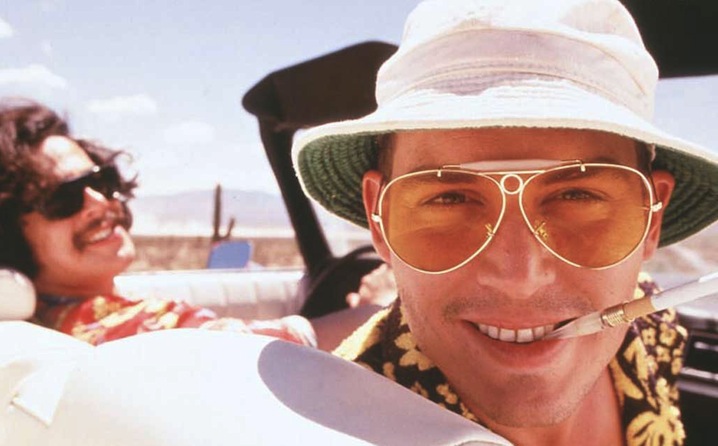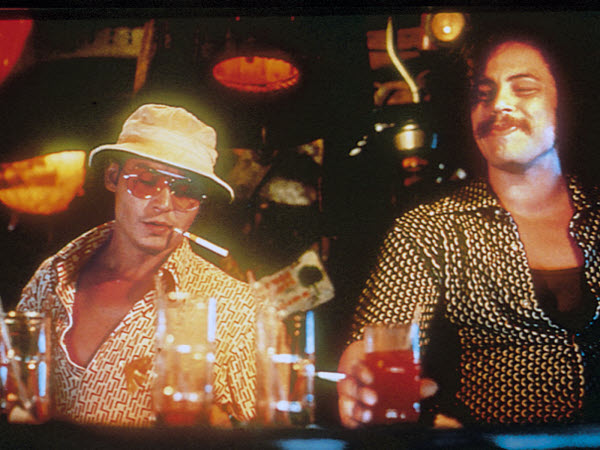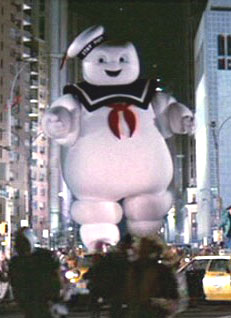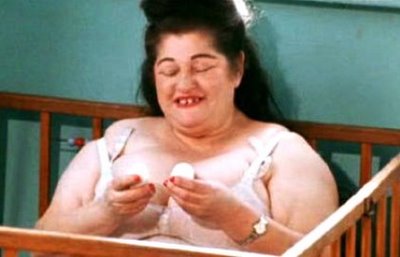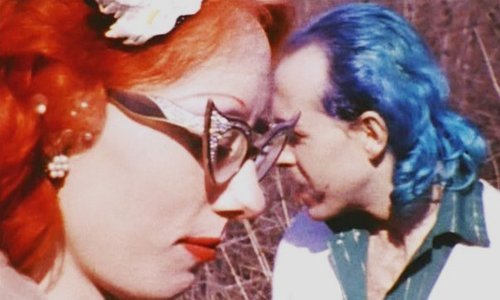 Buried Alive! Film Festival; Friday, Nov. 8 @ 7:00 p.m. – 1:30 a.m.; Saturday, Nov. 9 @ 3 p.m. – 1:00 a.m.; Plaza Theatre; Schedule here; Tickets $40 (all access, both days), $10 per programming block, available here and at the Plaza Theatre box office.
Buried Alive! Film Festival; Friday, Nov. 8 @ 7:00 p.m. – 1:30 a.m.; Saturday, Nov. 9 @ 3 p.m. – 1:00 a.m.; Plaza Theatre; Schedule here; Tickets $40 (all access, both days), $10 per programming block, available here and at the Plaza Theatre box office.
By Aleck Bennett
Contributing Writer
Who says that Halloween has to end with the month of October? Take a journey into the future of horror with a weekend of groundbreaking short-and-long-form cinema as the Buried Alive! Film Festival takes over the Plaza Theatre this Friday and Saturday November 8 and 9!
The festival was founded by local horror fiend Luke Godfrey, whom you’ll know as the co-creator of Chambers of Horror (Atlanta’s only adult Halloween attraction and this year’s ATL Retro pick for Haint of the Season) and the award-winning film series Splatter Cinema, as well as being the undead head of Zombie Walk Atlanta. Buried Alive! Film Fest has proven year after year to be one of the many reasons that Atlanta is recognized as among the horror capitals of the world, and this year proves to be no exception as Festival Director and filmmaker Blake Myers has loaded the schedule with the acclaimed, the weird, the wonderful and the outright outrageous.
The festival opens Friday night at 7:30 with the “Evil Everywhere! Shorts Program.” Transgressive German horror auteur Jörg Buttgereit (NEKROMANTIK 1 & 2, DER TODESKING, SCHRAMM: INTO THE MIND OF A SERIAL KILLER) reverently opens the show with A MOMENT OF SILENCE AT THE GRAVE OF ED GEIN. From there, we are treated to a series of shorts focusing on the presence of evil in the most unlikely of places. Atlanta-based explorations into this dark realm are represented by the memory-triggering subterranean chamber of CHLORINE, the hidden horrors of a quaint bed and breakfast in BURIED BENEATH and the dangerous efforts of a father and son to rescue a loved one from a cult in BAIT. Other standouts in this selection are the surreal and hellish underground Miami fighting ring of C#CKFIGHT, the promise of an innocent ride home detoured in NEXT EXIT, the trials of a boy thwarting a bullying monster in the acclaimed dark fantasy of SHHH… and the menacing, encroaching shadows of shelter in REFUGIO 115.
 This all leads to the 9:30 opening night feature, PIECES OF TALENT, preceded by the short film TERRITORIAL. While TERRITORIAL paints a darkly comic tale of a man settling in for a nice weekend, PIECES OF TALENT takes a more harrowing path, as aspiring actress Charlotte is swept into the plans of charming local filmmaker David. David is obsessed with creating a piece of “true art”—and that creation means a series of brutal on-screen deaths, with Charlotte as the climactic setpiece.
This all leads to the 9:30 opening night feature, PIECES OF TALENT, preceded by the short film TERRITORIAL. While TERRITORIAL paints a darkly comic tale of a man settling in for a nice weekend, PIECES OF TALENT takes a more harrowing path, as aspiring actress Charlotte is swept into the plans of charming local filmmaker David. David is obsessed with creating a piece of “true art”—and that creation means a series of brutal on-screen deaths, with Charlotte as the climactic setpiece.
Following the screening, the opening night party of the festival will be held at The Workshop on North Highland (one mile from the Plaza) from 11:30 p.m. to 1:30 a.m. Episodes of [adult swim] favorite YOUR PRETTY FACE IS GOING TO HELL (with effects and art direction from ATL Retro Kool Kats of the Week Shane Morton and Chris Brown) will be projected outdoors, while filmmakers from around the world will congregate to talk movies and generally have a fantastic time.
After you’ve rested and recuperated from the opening night party, the festival picks up once again at 3:00 p.m. with the “Weird and Wild Shorts Program.” As the title promises, this series takes a more off-the-wall (and at times darkly humorous) approach to the genre. Local highlights on offer here depict some unexpected changes under the light of the full moon in WEREHOOKER, the nefarious plans of an innocuous-looking clown in ALL YOU CAN EAT, and the comic domestication of the living dead in WELCOME TO THE BUBS. Among the other films, standouts are the insane comedy of the self-explanatory GIANT RUBBER MONSTER MOVIE, the gloriously bizarre visuals of DRACULA IN SPACE and the incredibly inventive “zombie apocalypse from a dog’s eye view” depicted in PLAY DEAD.
 5:30 brings us “International Terror: Shorts From Around the World,” and reprises Germany’s A MOMENT OF SILENCE AT THE GRAVE OF ED GEIN and the UK’s NEXT EXIT. In addition, Brazil is represented by the plight of the journey of the blind Rafael in AS ÓRBITAS, Australia by the masked terror of CAT SICK BLUES, Canada by the existential dread of FOR CLEARER SKIES and Spain by the television-fueled insanity of BARIKU LIGHT.
5:30 brings us “International Terror: Shorts From Around the World,” and reprises Germany’s A MOMENT OF SILENCE AT THE GRAVE OF ED GEIN and the UK’s NEXT EXIT. In addition, Brazil is represented by the plight of the journey of the blind Rafael in AS ÓRBITAS, Australia by the masked terror of CAT SICK BLUES, Canada by the existential dread of FOR CLEARER SKIES and Spain by the television-fueled insanity of BARIKU LIGHT.
We reconvene at 7 p.m. as the Atlanta chapter of the international film and animation association ASIFA joins forces with BA!FF to present the “Drawn and Quartered: Animation Program.” In addition to the intricately-constructed HERMAN BLUE, which local artist Ian Mark Stewart created using over 250 carved pumpkins, highlights include the Valentine’s Day-set NIGHT OF THE LOVING DEAD and the brilliantly macabre stop-motion of ABYSSUS ABUSSUM INVOCAT.
As the clock strikes nine, we explore the realm of body horror with the “Wave of Mutilation Shorts Program.” Local collective New Puppet Order delivers a horrifically funny tale of home invasion when a man discovers that an inter-dimensional gateway has opened up in the back of his skull in ED IS A PORTAL. And in addition to reprisals of BARIKU LIGHT and FOR CLEARER SKIES, another short you won’t want to miss is OTHER, which depicts a doctor’s extreme experiments in ridding his body of a rapidly-growing cancer. When an unforeseen development occurs with his equipment, he is determined to take his experiment all the way to witness the results.
 The closing night feature delves further into body horror with an encore of AS ÓRBITAS, followed by the feature film THANATAMORPHOSE. This Canadian film poses the question, “what would you do if you woke up to find yourself slowly rotting away?” A bravura acting turn from Kayden Rose and amazing makeup effects from David Scherer and Rémy Couture combine with Éric Falardeu’s claustrophobic and intimate direction to create a bleak—and ultimately moving—portrait of sexuality, abuse, loss of control, alienation and liberation.
The closing night feature delves further into body horror with an encore of AS ÓRBITAS, followed by the feature film THANATAMORPHOSE. This Canadian film poses the question, “what would you do if you woke up to find yourself slowly rotting away?” A bravura acting turn from Kayden Rose and amazing makeup effects from David Scherer and Rémy Couture combine with Éric Falardeu’s claustrophobic and intimate direction to create a bleak—and ultimately moving—portrait of sexuality, abuse, loss of control, alienation and liberation.
At $10 per screening block, or $40 for an all-access pass, Buried Alive! Film Festival continues to be the best bargain in town for anyone interested in the future of horror cinema, and the visionaries who push the boundaries of the genre.
Aleck Bennett is a writer, blogger, pug warden, pop culture enthusiast, raconteur and bon vivant from the greater Atlanta area. Visit his blog at doctorsardonicus.wordpress.com


